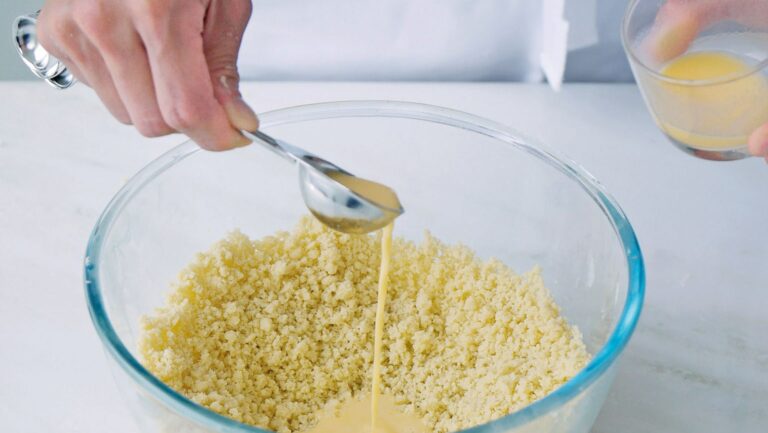As the name implies, shortcrust has a short, tender crumb, and it is used in sweet and savoury recipes. The most important element of the technique is rubbing the fat into the flour, which coats the flour with fat and creates a fine crumb. The fat acts as a protector around the grains of flour and hinders the development of gluten, which would make the pastry tough. You should need only a small amount of liquid to bring the crumb together and make the pastry manageable. Using as little liquid as possible to bind the dough also helps to achieve a tender crumb. Shortcrust is traditionally made with a combination of lard and butter. Lard lends a superior shortness but lacks the flavour of butter, so we generally use all butter.
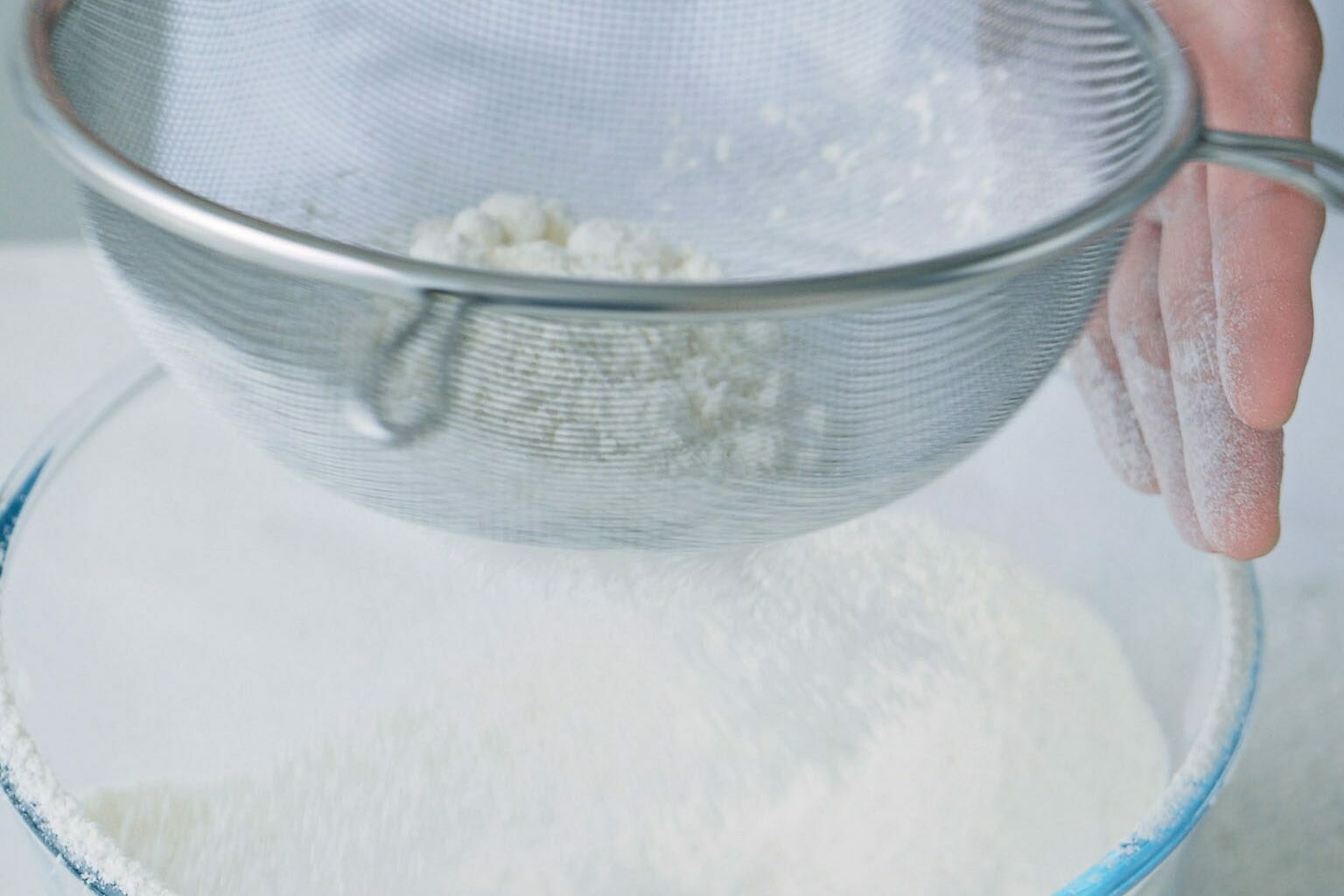
1. Sifting the flour and salt into the bowl.

2. Cutting the butter into the flour.
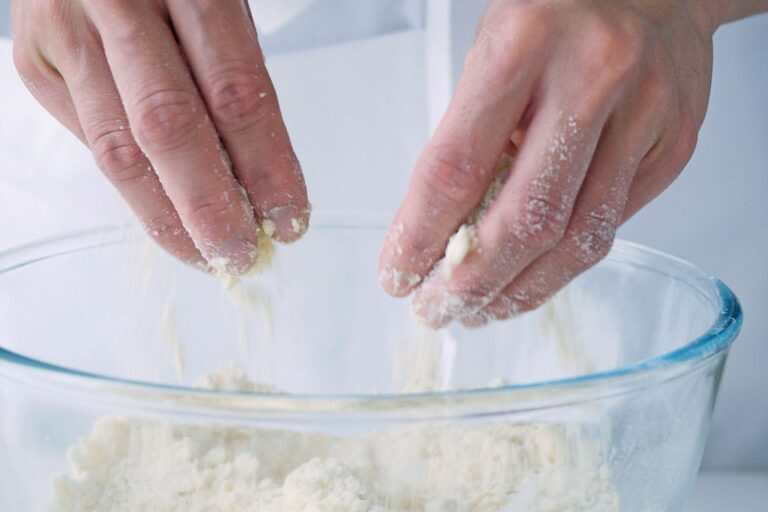
3. Gently rubbing the fat and flour together with the fingertips.
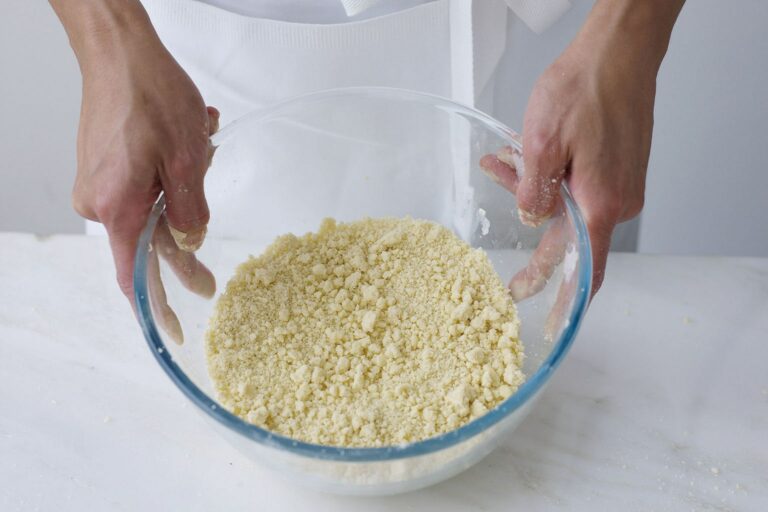
4. Checking the evenness of the crumb.
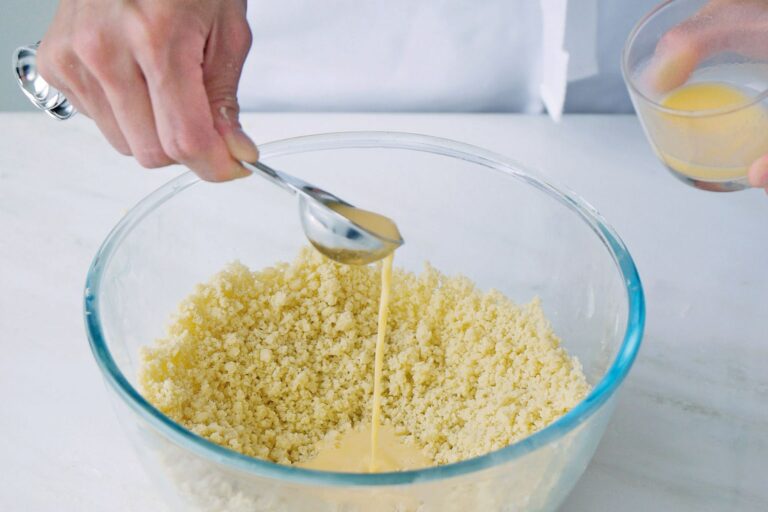
5. Adding the beaten egg yolks and water.
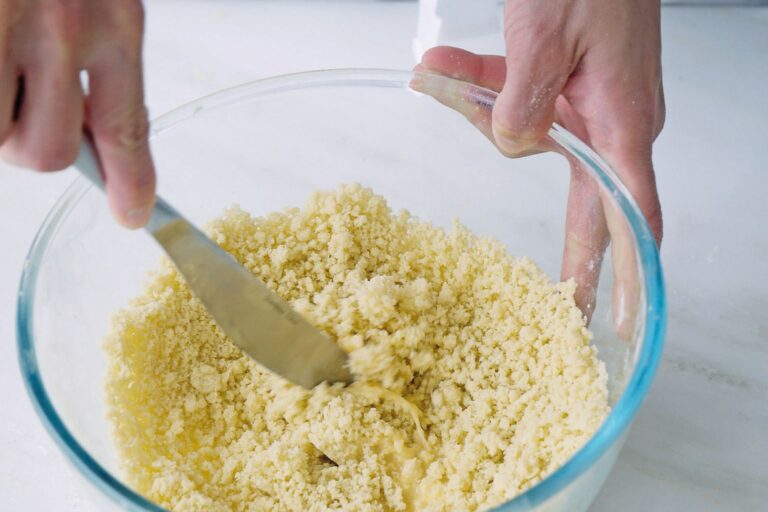
6. Using a cutlery knife to mix in the liquid.
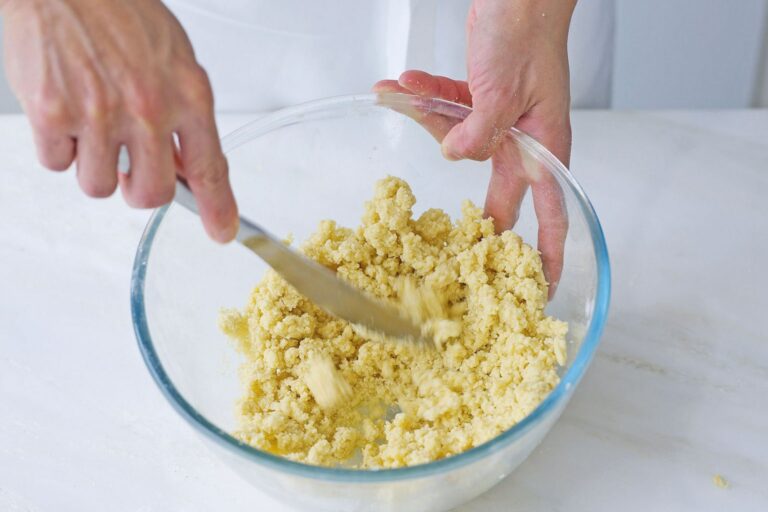
7. Drawing the pastry together with the knife.
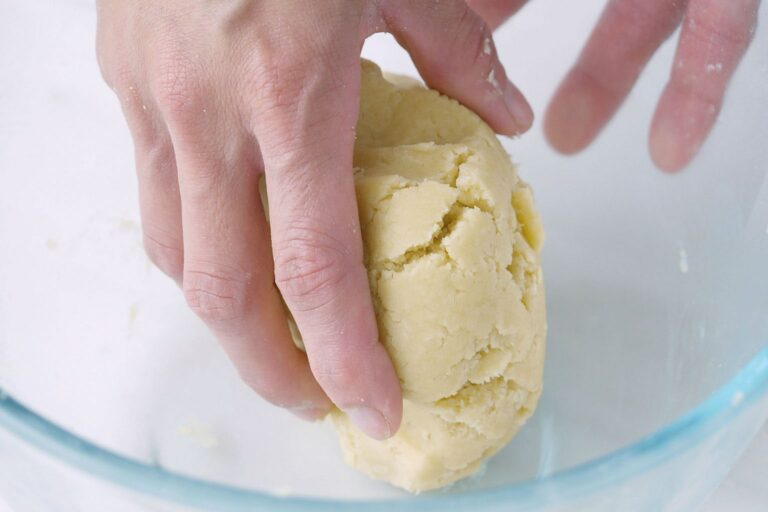
8. Bringing the pastry together into a ball.
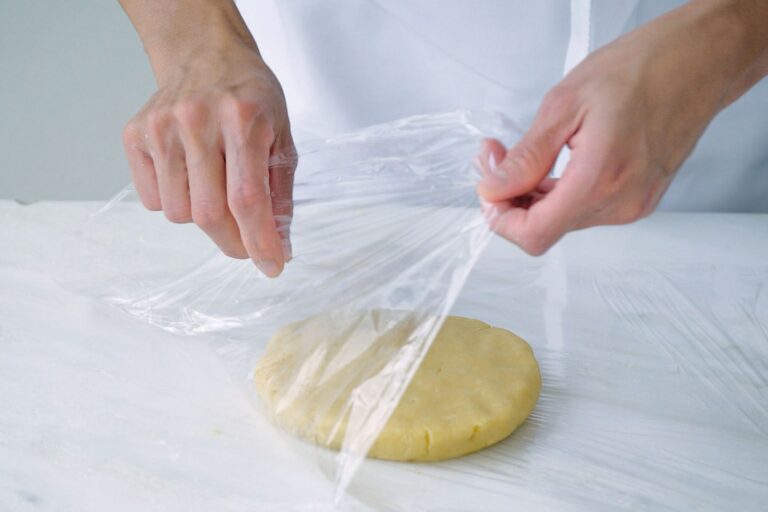
9. Wrapping the disc of pastry in cling film.
Ingredients
Makes enough to line a 24cm flan ring (or 8 individual tart cases)
250g plain flour
Pinch of salt
140g chilled butter
2 egg yolks
3–4 tbsp chilled water
Instructions
- Sift the flour and salt into a medium bowl.
- Cut the butter into small pieces and add to the flour. Using 2 cutlery knives and working in a scissor action, cut the butter into the flour, keeping the 2 knives in contact. Using knives rather than fingers helps to keep the butter and flour cool.
- Once the butter has been broken down to small pea-sized pieces, use your fingertips to gently rub the little pieces of flour and butter together.
- Give the bowl an occasional shake to lift larger lumps of butter to the surface. The mixture should become a uniform fine, pale crumb with no visible lumps of butter. If the mixture begins to turn yellow, the butter is softening too quickly and you need to put the bowl in the fridge for 5–10 minutes to chill the butter.
- Mix the egg yolks and water together in a small bowl with a fork until evenly combined. Add 2–2½ tbsp of the yolk mixture to the crumb and, using a cutlery knife, distribute the liquid as quickly as possible (this will create flakes of pastry).
- Pull some of the flakes to the side and feel them; if they are very dry, add a little more of the liquid to any dry areas of crumb and use the knife again. Don’t be tempted to add too much liquid, as it can make the pastry tough. Once you think the flakes will come together, stop adding liquid.
- Use the flat of the knife to bring a few of the flakes and dry crumb together, to create larger lumps. At this stage the pastry should be uniform in colour, not streaky. Continue like this until there are no dry crumbs in the bottom of the bowl.
- Pull the pastry together with your hands, shaping it into a flat disc, about 10cm in diameter and 1.5cm thick. Do this as quickly as possible, without overworking the pastry, which also makes it tough.
- Wrap the pastry in cling film and chill for 20–30 minutes before rolling out. This will relax it and prevent too much shrinkage, as well as firm up the butter.
Variations
Herb rich shortcrust pastry Add ½–1 tbsp chopped herbs such as thyme, rosemary, oregano or sage to the crumb mixture before the liquid.
Cheese rich shortcrust pastry Reduce the butter to 110g and add 30g finely grated hard cheese, such as Cheddar or Parmesan, before the liquid.
Wholemeal shortcrust pastry Use wholemeal flour in place of plain, omit the egg yolk and use 80g butter and 45g lard. You will need a little extra water too.
Plain shortcrust pastry For a less rich pastry, use 80g butter and 45g lard and omit the egg yolks. It may be necessary to add up to 1 tbsp extra water.
Sweet rich shortcrust pastry Add 2–3 tsp caster sugar before the liquid.
